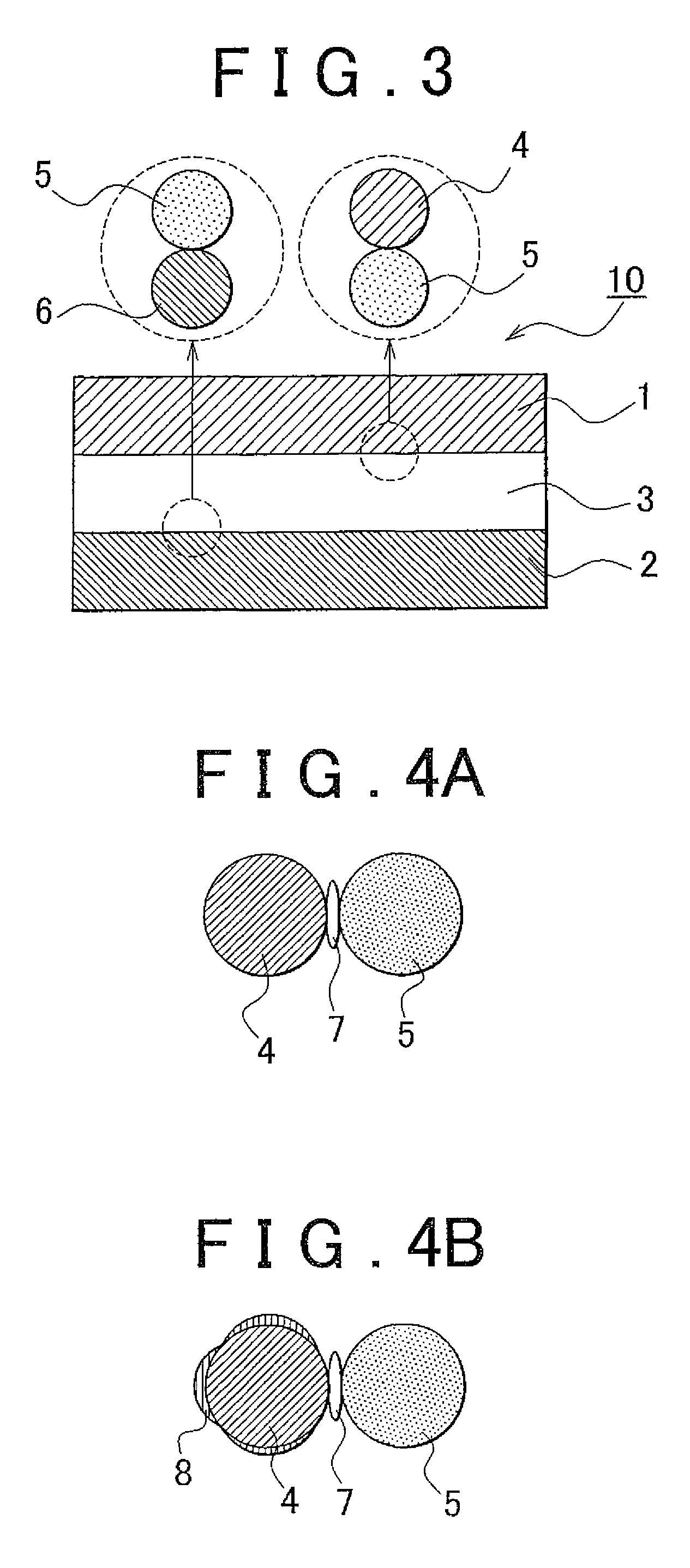Solid electrolyte material, electrode element that includes solid electrolyte material, all-solid battery that includes solid electrolyte material, and manufacturing method for solid electrolyte material
a manufacturing method and electrolyte technology, applied in the direction of non-aqueous electrolyte cells, sustainable manufacturing/processing, non-metal conductors, etc., can solve the problems of reducing the interface area, affecting the performance of the battery, and difficult for the electrolyte to penetrate into the positive electrode layer, etc., to achieve the effect of reducing the production of a high-resistance portion, simple process and low cos
- Summary
- Abstract
- Description
- Claims
- Application Information
AI Technical Summary
Benefits of technology
Problems solved by technology
Method used
Image
Examples
first example
Synthesis of Solid Electrolyte Material
[0125]Lithium sulfide (Li2S) and phosphorus sulfide (P2S5) were used as the material composition, and lithium fluoride (LiF) was used as the fluoride. The powder of them was placed in a glove box in an atmosphere of argon, and 0.3828 g Li2S, 0.6172 g P2S5 and 0.01 g LiF were weighed and then these were mixed in an agate mortar. At this time, the ratio of Li2S and P2S5 was 75:25 on a molar basis. In addition, the amount of LiF added was 6.5 mole percent on a fluorine basis with respect to the solid electrolyte material to be obtained. Subsequently, the mixed composition was put into a 45 ml zirconia pot, zirconia balls were further put into the pot and then the pot was completely hermetically sealed. The pot was mounted on a planetary ball milling machine. Then, mechanical milling was performed at a rotational speed of 370 rpm for 40 hours. After that, the solid electrolyte material (Li2S—P2S5-based solid electrolyte material that contains fluor...
second example
[0127]Under the same condition as that of the first example except that the amount of LiF added was changed to 0.05 g, a solid electrolyte material was synthesized, and then an all-solid battery was manufactured. At this time, the amount of LiF added was 33 mole percent on a fluorine basis with respect to the solid electrolyte material to be obtained.
third example
[0128]Under the same condition as that of the first example except that lithium hexafluorophosphate (LiPF6) was used instead of lithium fluoride (LiF), a solid electrolyte material was synthesized, and then an all-solid battery was manufactured. At this time, the amount of LiPF6 added was 6.6 mole percent on a fluorine basis with respect to the solid electrolyte material to be obtained.
PUM
| Property | Measurement | Unit |
|---|---|---|
| 2θ | aaaaa | aaaaa |
| 2θ | aaaaa | aaaaa |
| 2θ | aaaaa | aaaaa |
Abstract
Description
Claims
Application Information
 Login to View More
Login to View More - R&D
- Intellectual Property
- Life Sciences
- Materials
- Tech Scout
- Unparalleled Data Quality
- Higher Quality Content
- 60% Fewer Hallucinations
Browse by: Latest US Patents, China's latest patents, Technical Efficacy Thesaurus, Application Domain, Technology Topic, Popular Technical Reports.
© 2025 PatSnap. All rights reserved.Legal|Privacy policy|Modern Slavery Act Transparency Statement|Sitemap|About US| Contact US: help@patsnap.com



